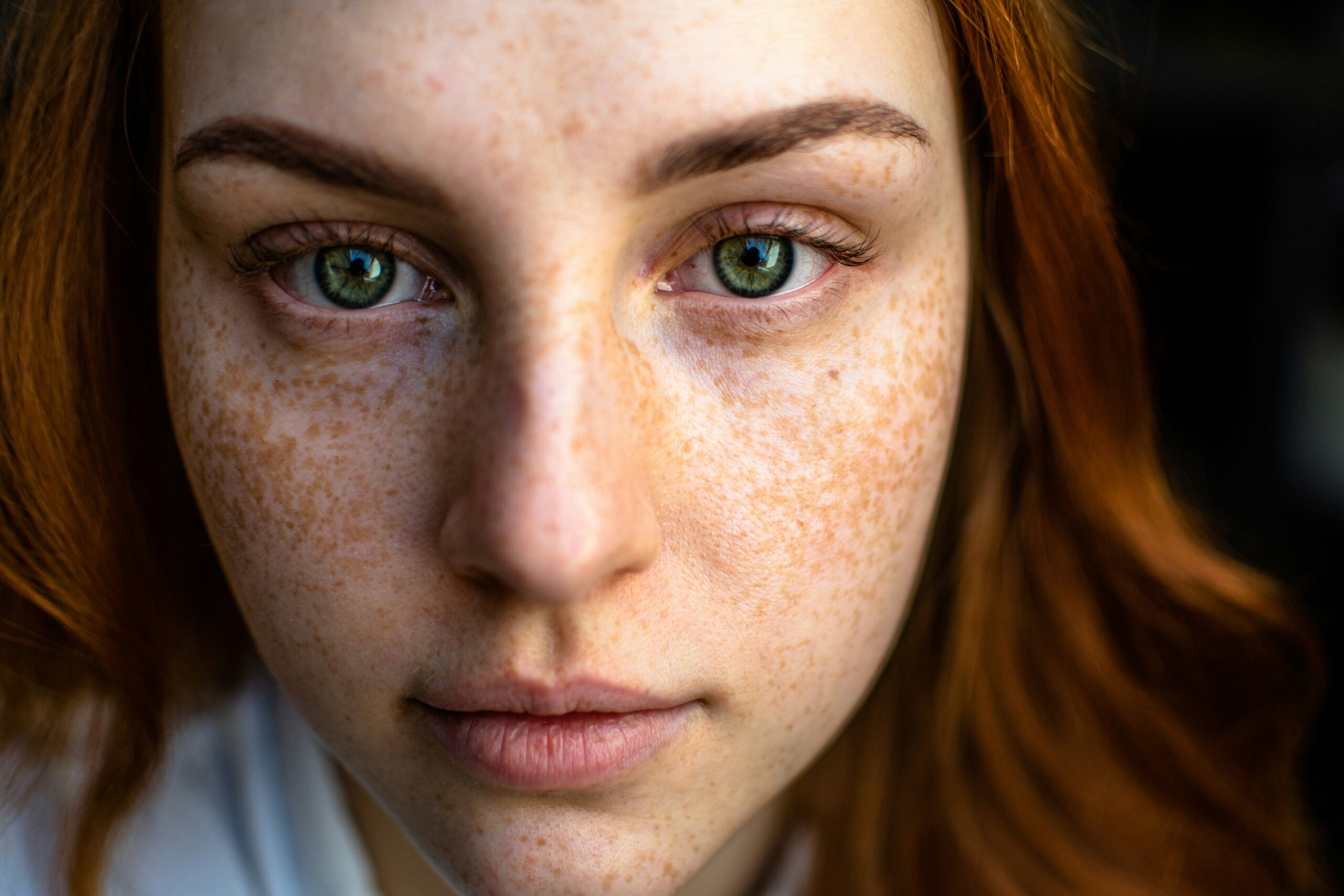Picture this: you’ve just invested in a fancy new moisturizer, applied it religiously for two weeks, and suddenly your face looks like a pepperoni pizza. Sound familiar? Welcome to the frustrating world of pore-clogging skincare – and exactly why understanding non-comedogenic products could be your skin’s best friend.
If you’re tired of playing Russian roulette with your pores, you’re in the right place. This guide will decode everything about non-comedogenic skincare, from separating marketing myths from science-backed facts to building a bulletproof routine that actually works.
And if you’re already dealing with breakouts from the wrong products, don’t panic – check out our complete guide to treating acne naturally for immediate relief strategies while you transition to pore-friendly products.
What Does Non-Comedogenic Actually Mean? (Spoiler: It’s Not Magic)
Let’s start with the basics. “Non-comedogenic” literally means “won’t cause comedones” – and comedones are just the fancy dermatological term for clogged pores, whether they’re blackheads (open comedones) or whiteheads (closed comedones).
But here’s where it gets interesting (and slightly annoying): there’s no official regulation for this term. Brands can slap “non-comedogenic” on basically anything, which means you need to become a bit of a detective to separate the real deal from clever marketing.
The Science Behind Clogged Pores: Your pores get blocked when dead skin cells, excess oil (sebum), and sometimes bacteria create the perfect storm. Think of it like a drain – too much stuff going down without proper clearance equals backup. Non-comedogenic products are formulated with ingredients that either help prevent this backup or don’t contribute to it in the first place.
Non-Comedogenic vs. Oil-Free: The Great Confusion
Here’s a common misconception that trips up even seasoned skincare enthusiasts: non-comedogenic and oil-free are NOT the same thing.
- Oil-free = Contains zero oils (but might still clog pores with other ingredients)
- Non-comedogenic = Formulated to minimize pore-clogging potential (but might contain certain beneficial oils)
Plot twist: some oils are actually non-comedogenic and beneficial for acne-prone skin. Jojoba oil, for instance, mimics your skin’s natural sebum and can actually help regulate oil production. Meanwhile, some oil-free products contain silicones or other ingredients that could potentially clog pores.
The Ultimate Ingredient Cheat Sheet: Heroes vs. Villains
The Good Guys (Non-Comedogenic All-Stars)
Salicylic Acid (BHA)
- What it does: Dissolves oil and dead skin cells inside pores
- Best for: Oily, acne-prone skin with blackheads
- Pro tip: Start with 0.5-1% concentration to avoid irritation
Niacinamide (Vitamin B3)
- What it does: Regulates oil production and minimizes pore appearance
- Best for: All skin types, especially combination and oily skin
- Bonus: Reduces inflammation and redness
Hyaluronic Acid
- What it does: Provides intense hydration without heaviness
- Best for: All skin types, especially dehydrated skin
- Fun fact: Can hold up to 1,000 times its weight in water
Glycolic Acid (AHA)
- What it does: Exfoliates surface dead skin cells
- Best for: Normal to oily skin with texture issues
- Caution: Increases sun sensitivity – always use SPF
Retinol
- What it does: Accelerates cell turnover and prevents clogged pores
- Best for: Mature or acne-prone skin
- Reality check: Takes 3-6 months to see full results
The Troublemakers (Pore-Clogging Culprits)
Mineral Oil
- Why it’s problematic: Can sit on skin surface and trap debris
- Found in: Many drugstore moisturizers and cleansers
- Alternative: Look for squalane or jojoba oil instead
Coconut Oil
- Why it’s surprising: Natural doesn’t always mean non-comedogenic
- Comedogenic rating: 4/5 (highly likely to clog pores)
- Exception: Works for some people with dry, non-acne-prone skin
Isopropyl Myristate
- Why it’s sneaky: Creates smooth texture but penetrates too deeply
- Found in: Many makeup products and moisturizers
- Red flag: Often hidden in ingredient lists
Sodium Chloride (Salt)
- Why it’s unexpected: Can absorb moisture and disrupt skin barrier
- Found in: Some cleansers and scrubs
- Watch out: Especially problematic for sensitive skin
Building Your Non-Comedogenic Arsenal: Products That Actually Work
Cleansers: The Foundation of Clear Skin
For Oily Skin: Look for gel or foam-based cleansers with salicylic acid or glycolic acid. The goal is thorough cleaning without stripping your skin so much that it overproduces oil in revenge.
For Dry Skin: Cream or lotion-based cleansers with ceramides or hyaluronic acid. You want to remove impurities while maintaining your skin’s moisture barrier.
For Combination Skin: Gentle foam cleansers that can handle your T-zone without drying out your cheeks. Think balanced, not aggressive.
For Sensitive Skin: Fragrance-free, non-foaming cleansers with minimal ingredients. Less is definitely more here.
Moisturizers: Hydration Without the Heaviness
The Non-Negotiable Ingredients:
- Ceramides: Strengthen skin barrier
- Dimethicone: Lightweight silicone that doesn’t clog pores
- Aloe Vera: Soothes and calms inflammation
- Green Tea Extract: Antioxidant protection with anti-inflammatory benefits
Texture Matters:
- Gel moisturizers: Perfect for oily, acne-prone skin
- Lightweight lotions: Great for combination skin
- Cream formulas: Ideal for dry skin (choose non-comedogenic ones carefully)
Sunscreens: Protection Without the Breakouts
Finding a non-comedogenic sunscreen used to be like searching for a unicorn, but thankfully, the skincare gods have blessed us with better options.
Look for:
- Zinc oxide or titanium dioxide: Physical blockers that sit on skin surface
- Lightweight, matte formulas: Control oil while protecting
- Oil-free formulations: Especially important for acne-prone skin
Avoid:
- Heavy, greasy formulas: Will definitely clog pores
- Chemical sunscreens with multiple active ingredients: Higher chance of sensitivity
Skin Type-Specific Game Plans
Oily Skin Protocol
Morning:
- Gel cleanser with salicylic acid
- Niacinamide serum
- Lightweight, oil-free moisturizer
- Broad-spectrum SPF with matte finish
Evening:
- Same cleanser or oil cleanser if wearing makeup
- Retinol (2-3 times per week)
- Hyaluronic acid serum
- Non-comedogenic night moisturizer
Dry Skin Strategy
Morning:
- Cream cleanser with ceramides
- Hyaluronic acid serum on damp skin
- Rich but non-comedogenic moisturizer
- Hydrating sunscreen
Evening:
- Gentle cleanser
- Glycolic acid (2-3 times per week)
- Nourishing serum with peptides
- Heavier night moisturizer
Combination Skin Balancing Act
The Multi-Zone Approach:
- Use different products on different areas of your face
- Gel moisturizer on T-zone, cream moisturizer on cheeks
- Spot-treat with salicylic acid where needed
Sensitive Skin Survival Guide
Keep It Simple:
- Maximum 3-4 products in your routine
- Introduce one new product every 2-3 weeks
- Always patch test on your inner wrist first
- Choose fragrance-free, hypoallergenic formulas
The Comedogenic Rating System: Your Pore-Clogging GPS
Understanding comedogenic ratings can help you make smarter product choices:
- 0: Won’t clog pores
- 1: Very low chance of clogging
- 2: Moderately low chance
- 3: Moderate chance
- 4: High chance of clogging
- 5: Will definitely clog pores
Reality Check: These ratings aren’t perfect, and everyone’s skin reacts differently. Use them as a guide, not gospel.
Now that you understand the fundamentals of non-comedogenic skincare and know which ingredients to seek out and avoid, you’re ready to put this knowledge into practice.
In Part 2 of our Complete Guide to Non-Comedogenic Skincare, we’ll dive deep into specific product recommendations across every category—from gentle cleansers and lightweight moisturizers to serums and sunscreens that won’t clog your pores. We’ll also share expert tips on how to layer these products effectively, common mistakes to avoid when building your routine, and how to troubleshoot if you’re still experiencing breakouts. Continue to Part 2 to discover the exact products that will transform your skincare routine and give you the clear, healthy complexion you’ve been searching for!

Hi! I’m Katia Luján, an SEO and Content Marketing expert with over 10 years of experience helping websites grow organically and get approved by Google AdSense.
I’ve worked in Google’s Trust & Safety team for AdSense and have helped more than 100 websites comply with monetization policies. Currently, I’m the strategist behind Buzzlix—creating SEO-optimized, high-quality content on beauty, skincare, and self-care.
I’m passionate about empowering others with actionable, sustainable, and accessible beauty content.


Leave a Reply